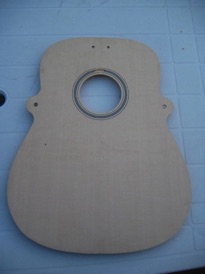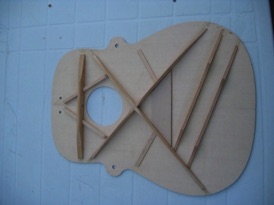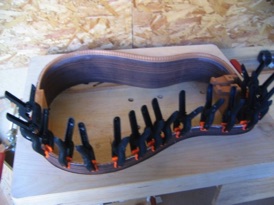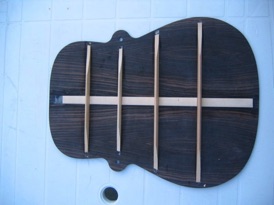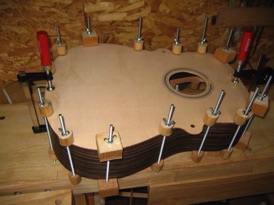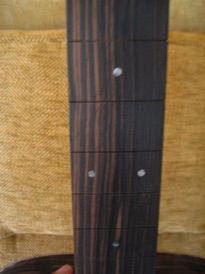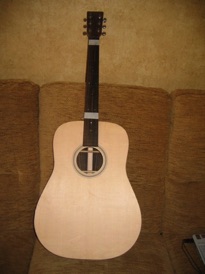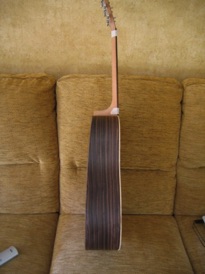
DREADNOUGHT

This is the first of three a dreadnaught steel-strung acoustic guitars I made from parts supplied by the C F Martin Guitar Company.
This one, based on the D-28 model, has a Grade A soundboard with Black American Walnut back and sides.
The neck is South American Mahogany with a steel adjustable truss accessed through the sound hole.
The fretboard and bridge is Indian Rosewood.
The kerfed linings are Willow and the bracing is Spruce.
Since taking these pictures, the guitar has been fitted with an active bridge pickup.
This guitar was supplied as a kit - actually a box containing bits of wood. The sides were pre-bent, the neck was roughly shaped and the fretboard pre-kerfed. Everything else had to be worked. So don’t confuse this with a plastic construction kit where all you have to do is stick the bits together. As time has moved on and I’ve acquired more and more specialist tools, less pre-worked pieces are required. In fact, my last few instruments have had no pre-prepared parts.
Click on a picture below to begin a slide show
